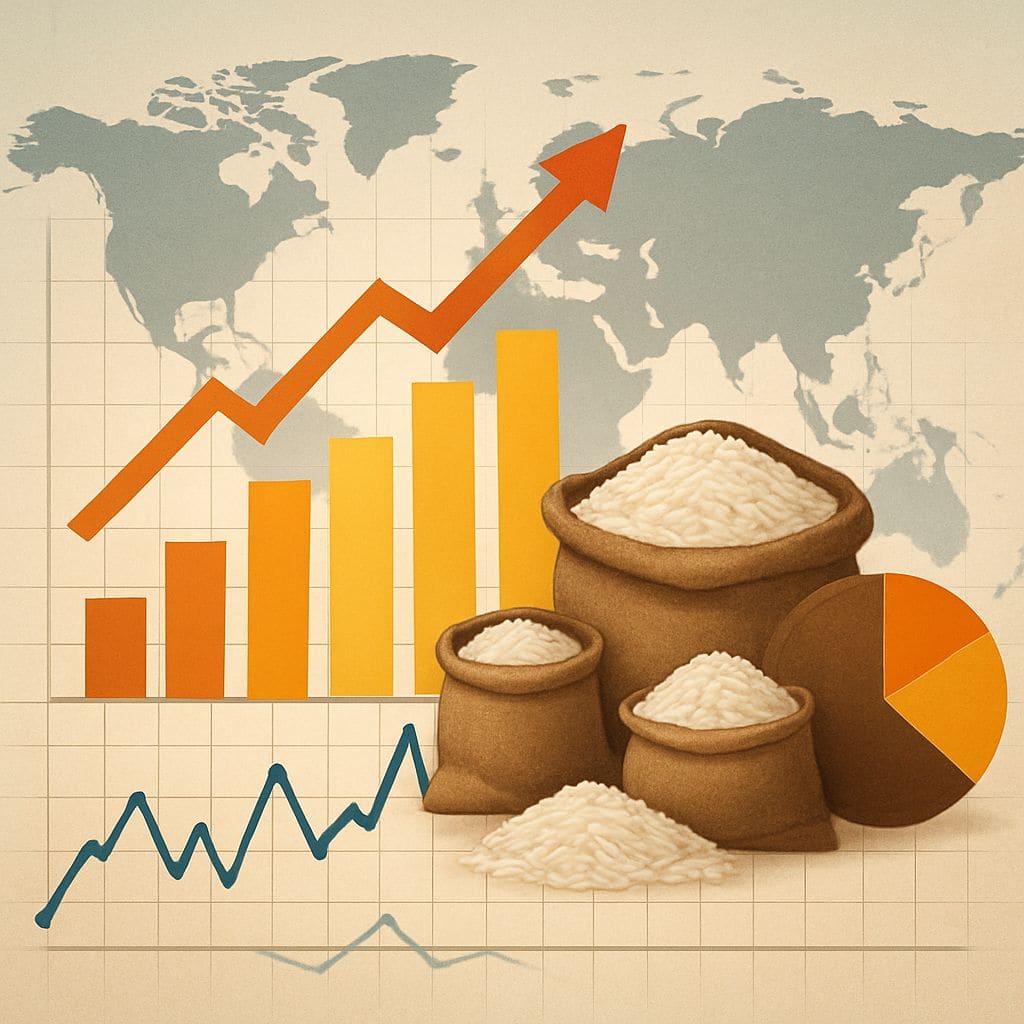
India has long been a dominant force in the global rice trade. With its rich agricultural heritage and diverse rice varieties, the country has consistently held its place as a top exporter. However, the landscape of rice export from India is evolving due to shifting market demands, technological advancements, and government policies. Let’s uncover five surprising trends that define the current trends in Indian rice export and what lies ahead in this industry.
1. Rising Popularity of Specialty Rice Varieties
Indian specialty rice varieties, such as Basmati and Sona Masoori, are garnering tremendous attention worldwide. The increasing preference for premium-quality and aromatic rice in affluent markets has made these varieties some of the most sought-after. Countries in the Middle East, Europe, and the US are the biggest consumers of Indian specialty rice. This is particularly exciting for rice exporting companies in India, as they capitalize on growing consumer demand.

Global Pulse Farm, a leading player in this market, has been instrumental in promoting the best of India’s rice varieties to international buyers. By ensuring high quality and adhering to global standards, the company has significantly contributed to bolstering India’s reputation in the international rice market.
2. Technology as a Key Driver in Exports
The adoption of advanced technologies has played a significant role in reshaping the current trends in Indian rice export. Technologies like blockchain for improving supply chain traceability, automated processing units, and AI-driven agricultural insights are helping exporters enhance efficiency and quality.
Global Pulse Farm stands out in this area by leveraging cutting-edge methods to ensure its rice export supply chain remains seamless and transparent. Their commitment to innovation has helped them set benchmarks in an industry constantly looking to evolve.
3. Shifting Demand Patterns in Key Markets
Market dynamics for rice export are rapidly changing. Previously dominated by traditional importers, Indian rice is now finding new destinations. African nations, which have historically been large importers of Indian rice, are seeing competition from growing markets like China and Southeast Asia. Trade agreements and geopolitical factors are opening doors for rice exporting companies in India to enter territories that were previously untapped.

Companies like Global Pulse Farm have identified these trends early on, making strategic moves to penetrate emerging markets, further diversifying the reach of Indian rice.
4. Sustainability Gaining Center Stage
Sustainability practices are becoming one of the defining elements of the future of rice export from India. Exporters are now emphasizing organic farming, reduced water usage, and the carbon footprint of farming practices. These steps aren’t just about ethical farming; they’re also about meeting strict global regulations that can make or break trade deals.
Global Pulse Farm is at the forefront of this movement by prioritizing sustainability at every stage of production. From supporting local farmers to implementing eco-friendly packaging, they are setting a gold standard for the industry, ensuring that Indian rice stays competitive globally.
5. Challenges in Maintaining Competitive Edges
Despite its dominance, the challenges in Indian rice export industry remain significant. From fluctuating prices in the global markets to climate change impacting production cycles, exporters are navigating several hurdles. Additionally, non-tariff barriers such as stringent quality standards in European markets pose additional struggles.

Yet, these challenges also present opportunities for growth. By maintaining high standards and focusing on innovation, exporters like Global Pulse Farm have managed to turn obstacles into pathways for success, proving that resilience is key to thriving in this industry.
The Way Forward
The future of rice export from India looks promising, thanks to evolving market dynamics, technological advancements, and international opportunities. While challenges persist, India’s strong agricultural base and the reliable efforts of top players like Global Pulse Farm ensure the industry continues to thrive. By prioritizing quality, sustainability, and market adaptability, India will maintain its leadership in the global rice trade for years to come.
FAQs
1. What is India’s current position in the global rice export market?
India is the largest exporter of rice globally, contributing significantly to the worldwide rice trade.
2. How do trade policies impact rice exporting companies in India?
Trade policies, including export bans or quotas, can either boost or restrict opportunities for rice exporters in India.
3. What are the new markets emerging for Indian rice export?
Countries in Africa, the Middle East, and Europe are becoming key destinations for Indian rice exports.
4. What challenges do small rice exporting companies in India face?
Small exporters often struggle with rising freight costs, quality compliance, and stiff competition from larger players.
5. How can India ensure the future of rice export remains stable?
Investing in technology, focusing on sustainability, and building strong trade partnerships can secure the future of rice export from India.
